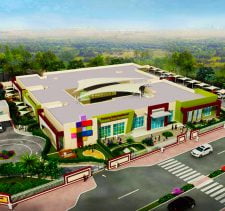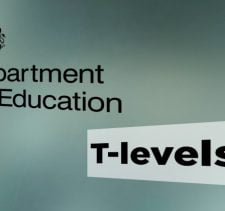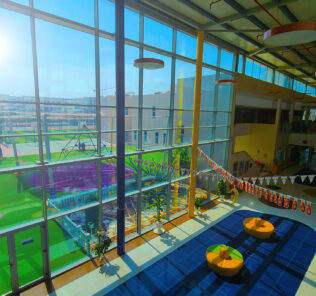International AS Level Guide
The AS Level, also known as the Advanced Subsidiary Level or A1 Level), is the first part of the International A’ Level. It is usually taken over a one-year period in Grade 12, by students between the age of 16 and 17, in English National Curriculum all-through or secondary schools.
The second part of the International A’ Level, the A2 Level, is taken over a one-year period in Grade 13 by students between the ages of 17 and 18, and explores subject in greater depth and greater academic rigor.
In the UAE, as well as being the first year of A’ Level study, the AS Level is an examination in its own right and a number of schools, particularly in the Indian sector, only provide post 16 education to AS Level. The A2 Level is not a separate qualification and cannot be studied without previously studying for the AS Level in the relevant subject.
The AS Level in the UK operates completely different to the AS level in the Emirates. The UK AS Level is decoupled entirely from A Levels and is a fully separate qualification with a status between O’ and A’ Level.
United Kingdom of Great Britain and Northern Ireland
There are 2 examination boards who assess the International AS Level:
• Cambridge International Examinations[CIE];
• Pearson EDEXCEL
Studied over one year from age 16 and sat at age 17. This is generally the first year of a full international A’ Level course – current international A’ Levels are modular.
Some schools allow Gifted and Talented[G&T] students to bring AS Levels forward to be taken the final year of International O Level study at age 16.
Some Emirates’ schools only provide post-16 education to AS Level (rather than full International A’ Level.)
Choice of around 55 subjects, although most schools offer between 12 and 20 subject options.
Major options include English; Mathematics; Chemistry; Physics; Biology; Sociology; Geography; History; Media Studies; Psychology; Politics; Information Technology; Business Studies, Technology; Design & Technology, Music, Travel & Tourism and any number of modern and ancient languages.
Students sit on average for 3 subjects, although the exact number varies between schools and the ability of the child to between 2 and 4 subjects. Some students sit for a combination of international AS and A Levels.
A high academic achiever might expect to sit either 4 full international A’ Levels or 3 full international A’ Level and one AS Level.
Note:
It is preferable to achieve 3 full A’ Levels with high grades than 4 full A’ Levels with low grades, or multiple AS Levels of any grade.
AS Levels are not sufficient to qualify a student to enter UK universities.
Notes:
1. The International AS Level is a different examination to both the GCE A’ Level sat in most English schools with different examination, curriculum and coursework requirements.
2. The UK is radically re-structuring and academically strengthening GCE A’ and AS Level provision and children are currently sitting new A and AS Levels that are linear, not modular and assessed only on the basis of examinations at the end of the two-year period of study.
3. In the UK A Levels will no longer be modular and AS Levels are “Supplementary” rather than “Subsidiary” – they are not the first year of an A Level (as in the Emirates), but completely separate stand-alone qualifications. AS Level results in the UK no longer count towards an A Level.
4. There are no plans by EDEXCEL or Cambridge International to bring the new UK A’ or AS Level curricula to the Emirates.
Assessment takes place at the end of the course and can currently include written, oral, coursework and practical assessment according to subject. Most International AS Levels are strongly weighted to examination results but do include up to 40% marks for defined blocks of coursework.
Examinations occur twice in the final year, in May/June and November depending on subject. Results are issued in August and January.
Whilst International A’ Levels are weighted towards final year examinations, there is a balance between critique and fact learning. There is a strong weighting of points awarded to critical thinking over facts within examinations. Coursework can account for 40% of total marks considered for the awarding of the qualification.
AS level study is arguably best suited to academic children. AS Levels should not be understood as “easier” than International A’ Levels – they are, rather, simply the first half of an A’ Level.
In the UK, January sittings are being scrapped limiting the opportunities to re-sit AS Levels. Opportunities to re-sit international A’ Levels are currently still available in the emirates.
Extensive materials are available.
A* to E
Costs rise according to the school’s ability to offer a wider range of options. The cost of a good British education is generally higher than alternative curricular and comparable only to that of studying for the International Baccalaureate Diploma [IB DP]. A number of Indian schools in particular currently only offer post-16 education to AS Level.
Because of its breadth and rigour, transfer from the English National Curriculum schools is arguably easier than trying to transfer into them. Because A’ Levels are subject specific, however, transferring after A’ Levels have been started to an alternative broader curriculum is likely to be difficult.
Age differences between curriculum based on schools with study to Year 12 may make transfer from English National Curriculum schools impractical.
For French and German transfer the fundamental decider will be linguistic competence in the host language.
The full A Level, whether UK or International, is the benchmark qualification for progressing to study for degrees at UK Universities.
.
The A’ Level is also probably the most widely accepted international qualification in the world. In countries such as the United States and Canada, for example, high grades in certain A Level subjects can result in up to one year of university course credit.
AS Levels, whether in the Emirates or overseas, should be converted to A Levels to have significant impact, unless they are packaged with three full international A’ Levels.
When part of a full A Level, academic children and those students seeking to progress to a University education anywhere in the world.
When stand-alone, students seeking to have a broader spread of subject options post-16 prior to deciding on their final choice for degree study.
An extra AS Level should always be taken with three primary full A’ Levels.
Taking a stand—alone AS Level has limited value beyond that it provides the student personally in broadening their base of subject knowledge.
Moderate – significantly less than full A’ Levels.
Moderate - significantly less than full A’ Levels. Many employers will treat AS Levels in alignment with IGCSEs rather than perceiving them in alignment with the standards of A’ Level.
AS Levels are not sufficient to gain entry to UK universities in themselves. They are unlikely to carry significant sway even as a “subsidiary” subject – attention is generally focused on the highest grading achieved by a student in three A Levels.
The AS Level evolved from the previous “Advanced Supplementary” Level. It was originally designed to enable particularly academic student to supplement their core 3 or 4 subjects at A Level with further subject(s) to diversify their knowledge. AS levels functioned as a way of allowing academic children a broader secondary education than the restrictive specialism characteristic of A Levels. In this way AS Levels allowed academic children a broader reach much nearer to the less specialised, but much broader in reach, International Baccalaureate diploma. The UK has returned to this model.
A number of Tier 1 schools in Dubai continue to offer AS Levels independently of core A Level study to provide that greater subject breadth.
In practice, most children will take AS Levels as part of International A’ Levels.
Our view is that students should concentrate on securing the highest possible grade in 3 (or exceptionally 4) International A’ Levels. AS Levels do not carry weight with employers or universities relative to the complete A Level qualification and at worst can divert students from achieving high grades where they really count.










































































Leave a Response